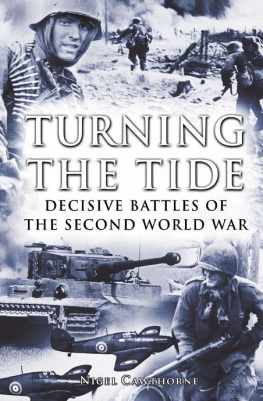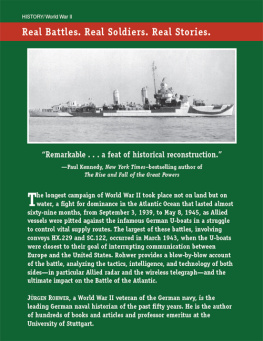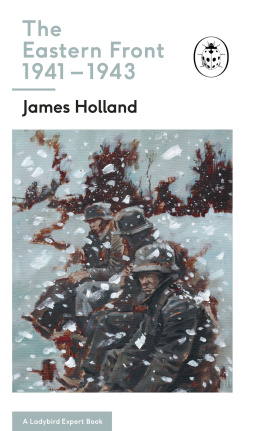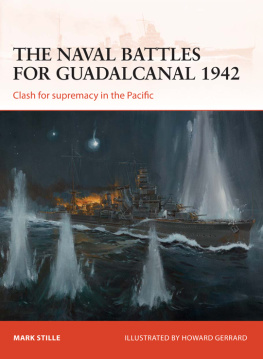FROM AXIS VICTORIES TO THE TURN OF THE TIDE
About the Author
Alan Levine is a historian, with a doctorate from New York University, specializing in World War II and the Cold War. He teaches at Borough of Manhattan Community College in New York City. He is the author of a dozen books, most recently Bad Old Days: The Myth of the 1950s (Transaction Publishers, 2008) and Stalins Last War: Korea and the Approach to World War II (McFarland, 2005). Two of his earlier books, D-Day to Berlin: The Northwest Europe Campaign, 194445 (Praeger, 2000) and The War Against Rommels Supply Lines: 194243 (Praeger, 1999), have recently been reprinted in paperback.
FROM AXIS VICTORIES TO THE TURN OF THE TIDE
WORLD WAR II, 1939-1943
Alan Levine

Copyright 2012 Potomac Books, Inc.
Published in the United States by Potomac Books, Inc. All rights reserved. No part of this book may be reproduced in any manner whatsoever without written permission from the publisher, except in the case of brief quotations embodied in critical articles and reviews.
Library of Congress Cataloging-in-Publication Data
Levine, Alan J.
From Axis victories to the turn of the tide : World War II, 1939-1943 /
Alan Levine. First Edition.
p. cm.
Includes bibliographical references and index.
ISBN 978-1-59797-711-1 (hardcover) ISBN 978-1-59797-795-1 (electronic)
1. World War, 1939-1945Campaigns. I. Title.
D743.L49 2012
940.541 dc23
2012012053
Printed in the United States of America on acid-free paper that meets the American National Standards Institute Z39-48 Standard.
Potomac Books
22841 Quicksilver Drive
Dulles, Virginia 20166
First Edition
10 9 8 7 6 5 4 3 2 1
CONTENTS
Dunkirk through the Battle of Britain
1939-1941
To Moscow
From the Fall of France to December 1941
American Intervention
December 1941-May 1943
To the Caucasus and Stalingrad
From Pearl Harbor to the Invasion of Northwest Africa
Pearl Harbor to Midway
1
The Catastrophe
On May 20, 1940, the German Army reached the English Channel. Fighting in France went on for another month, but the success of the campaign that had begun ten days earlier was assured. The Dutch had already surrendered, and the northern wing of the remaining Allied armiesthe entire Belgian Army, the British Expeditionary Force (BEF), and the strongest element of the French Armyhad been cut off. Although the forces in the northern pocket were not all as hopelessly trapped as it seemed, the defeat in the north left the French so weak that they had no prospect of holding out against the Germans when the latter turned south. Victory in the western campaign, achieved within the first ten days, had completed the Nazis domination of Europe west of the Soviet frontier.
Adolf Hitler had risen from the gutters of Vienna to master an empire greater than that of Napoleon Bonaparte. Many feared that eventually, perhaps even soon, the Nazis would conquer the rest of the world.
In only seven years, Hitler and the Nazis had established a totalitarian regime with wide popular support, restored prosperity to Germany, thrown off the limitations imposed by the peace settlement after World War I, rearmed, broken down the alliances the French had constructed after World War I, absorbed Austria and the Czech lands, and established German domination over eastern and central Europeall without firing a shot. Then, in less than a year of war, the Nazis had more than reversed the outcome of World War I. They had accomplished it all despite Germanys near helplessness in 1933 and the warnings that the world read in Hitlers own writings in Mein Kampf and in those of the eloquent ex-Nazi Hermann Rauschning. Again and again, Hitler had taken his enemies by surprise. Among the Germans and others, even those who had little use for Nazism, Hitler had established a reputation as a virtual magician.
Hitlers personal ideologythe product of what historian Stanley Payne described as a rather powerful but delusory mindwhich became the official doctrine of the Nazi Party, determined the aims and even the strategy of the war. The ideological quirks of Hitler and the Nazis would be more important in determining the nature and outcome of World War II than is generally recognized even today. (For that matter, the delusions of their enemieswhether they concerned Joseph Stalins ideas about Hitler or those of Western liberals and leftists who saw the Spanish Civil War as Armageddon or who imagined that Stalin would be a reliable allywere of no small impact either.) Hitler was driven to move fast, partly by his fears that America would intervene and that he would die at an early age, and that no successor could save Germany.
For Hitler, and for most Nazi leaders, his hatred of the Jews, his convictions about the racial inferiority of the Slavs, and his aims of eastern conquest and colonization were all tied together. The Nazis held that the superior Aryan race, of which the Germanic peoples were the purest representatives, had created what was most valuable in human culture and was menaced by inferiors and the satanic Jewish counter-race. The Aryans, and especially the German speakers, were too few in numbers and too confined in space. Germany occupied too small and exposed a territory, facing threats from the west by the French, who would always be hostile to Germany, and from the east by the more numerous Slavs, who might close the German lead in technology. (The Nazis, though, believed that some of the Western and South Slavs were of German origin and should be re-Germanized.) Germany needed more space (lebensraum), which must be found in the east. The Nazis race doctrine was further tied to their anti-communism. They maintained that Soviet communism was the product of an uprising by the inferior Slav majority under Jewish leadership against the old Russian ruling class, which had itself been of Germanic origin and had created the Russian state, providing the organization and leadership that had shaped the inferior mass of Slavs into a formidable opponent. Although the Nazis felt that the Soviet regime was the most extreme and horrible form of Jewish rule, they saw it as only a limited threat because the Jews, fundamentally inferior and capable only of destruction, could not effectively replace the older rulers. By destroying the latter the communist rulers actually had eliminated the only real obstacle to German expansion eastward, which would be the starting point for its world empire.
Thus Hitler, at least until the crisis on the eastern front in late 1941, did not take Soviet power seriously. This had the seemingly paradoxical result that while Hitlers primary aim was conquest in the east, Germanys main opponent was in the west. As historian Eberhard Jckel observed,
When Hitler reflected on how this war [against the USSR] was to be won, his thoughts were from the beginning not really directed toward the actual opponent, for the Soviet Union was supposed to collapse swiftly under a German attack. Rather, his thoughts were directed toward establishing a diplomatic constellation, in which Germany could not be prevented by other powers from achieving success. In Hitlers eyes, their intervention was the real problem.
Even non-Nazis regarded the French Army, rather than the Soviets, as the most formidable army in Europe. Professional pride and their respect for the French Army led non-Nazi German generals to the same conclusion.
Next page











